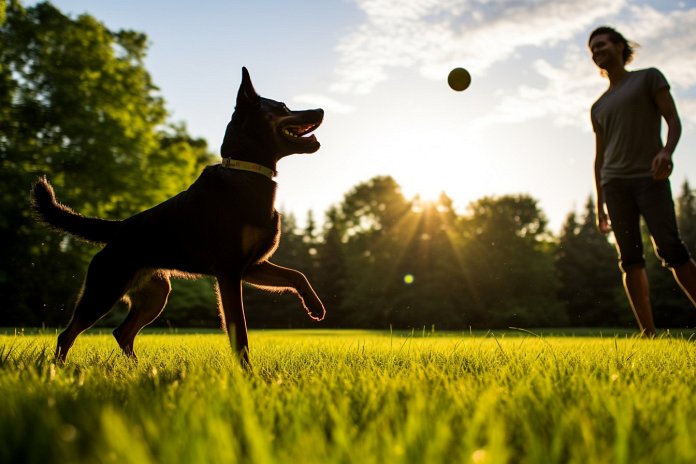
Fleas can cause discomfort and irritation for our pets, and in severe cases, they can lead to anemia in young puppies, which can be fatal. Protecting your dog from fleas is important for more than just stopping an itch.
Signs Your Dog Has Fleas
Fleas are the leading cause of itchiness, scratching, and irritation in dogs. They can also cause flea bite sensitivity, resulting in intense itchiness around certain areas. This leads to scratching, red and inflamed skin, sores, and hair loss. Fleas can also transmit tapeworms and cause anemia in puppies.
Body Language
Watch for signs like chewing, scratching, biting, and licking that indicate your dog may have fleas. Other signs include intense itchiness, rubbing, red and inflamed skin, sores, and hair loss.
The Science of Dog Fleas
There are over 300 species of fleas in North America, with the most common being the dog flea and the domestic cat flea. Fleas are wingless parasites that jump to find new hosts. Their life cycle consists of egg, larva, pupa, and adult stages.
Treatment and Prevention of Fleas
Treating flea infestations can be challenging because you need to eliminate fleas from both your pet and the environment. Fleas can survive in colder months and wait for favorable conditions. Treat all animals in your home with flea combs or various products designed to combat fleas. Additionally, clean your home thoroughly and consider using insecticidal products or professional exterminators.
“Effective flea prevention requires treating both your pet and the surrounding environment.”

Tips & Things to Know
1️⃣ Flea prevention is important not only to stop itchiness but also to prevent serious health issues like anemia and tapeworms. Regularly monitor your dog for signs of fleas which include scratching, biting, licking, intense itchiness, red and inflamed skin, raw sores, and hair loss.
2️⃣ Understanding the life cycle of fleas is key in treating them. It comprises four stages – egg, larva, pupa, and adult. Treating fleas requires eliminating them from both your pet and the surrounding environment.
3️⃣ Fleas can be present all year round, not just in warmer months. To tackle a flea infestation, treat all animals in your home with suitable products that can kill adult fleas, larvae, or prevent eggs from hatching. Regular cleaning of your home can also deter fleas. If the infestation is severe, consider getting professional extermination help.
Frequently Asked Questions, Answered ✅
1. What are the signs that my dog has fleas?
– Signs include itchiness, scratching, biting, licking, red and inflamed skin, weeping sores, and patchy areas of hair loss.
2. Can fleas cause health issues for my dog?
– Yes, severe infestations in puppies can lead to a reduction in red blood cell count and cause anemia. Fleas can also transmit tapeworms.
3. How do fleas affect my dog’s body language?
– Fleas can cause your dog to exhibit behaviors such as chewing, scratching, biting, and licking.
4. What is the life cycle of a flea?
– The flea life cycle consists of four stages: egg, larva, pupa, and adult flea. Adult fleas lay eggs, which hatch into larvae, then spin a cocoon and transform into adult fleas.
5. How can I treat and prevent fleas in my home?
– Treating flea infestations involves treating all animals in your home and eliminating fleas from the environment. There are various products available, such as spot-on liquids, foams, shampoos, powders, sprays, and collars. It is also important to clean and vacuum surfaces in your home and consider professional extermination services.